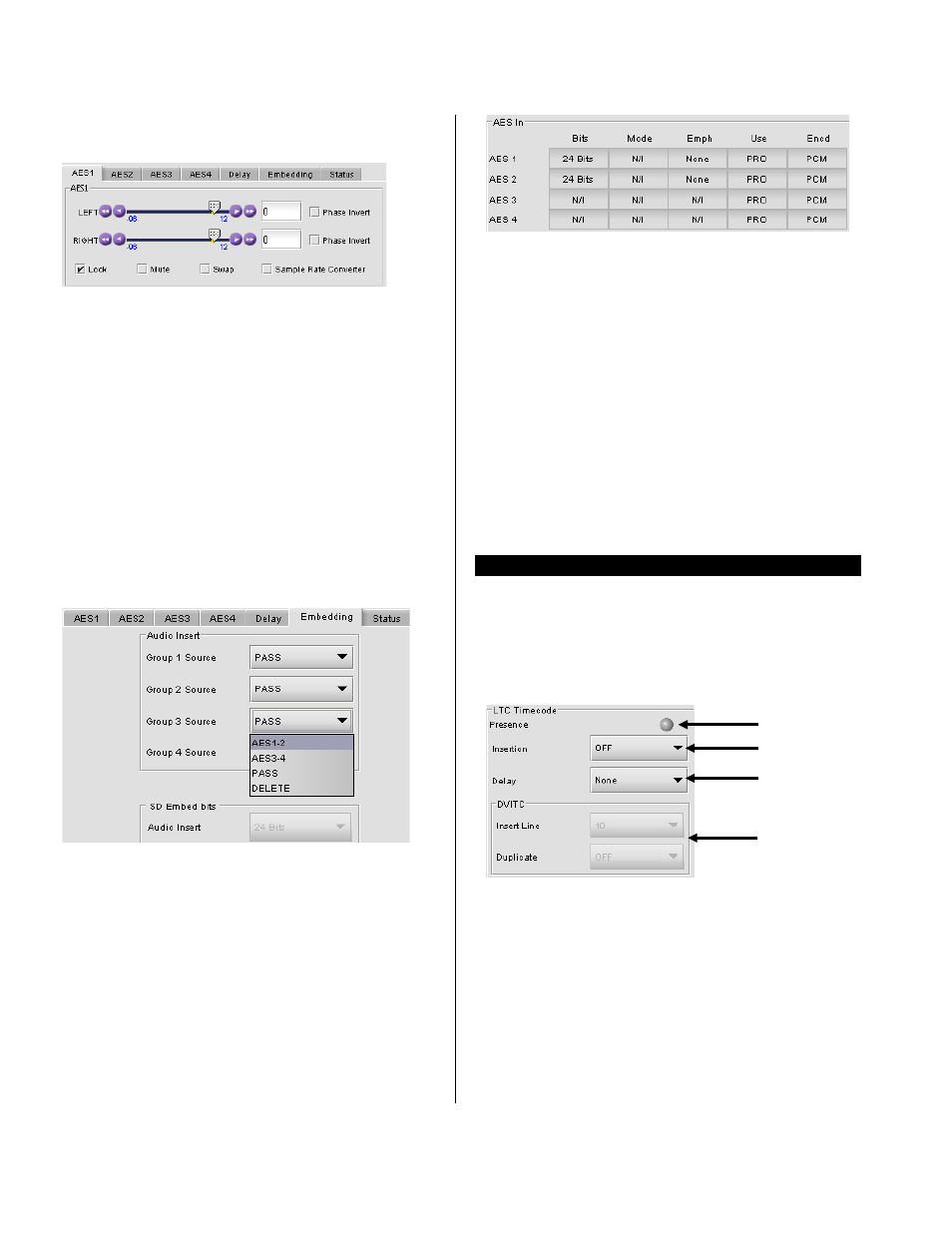Grass Valley AMX-1842 User Manual
Page 8

AMX-1842 HD/SD 4 AES Embedder
Guide to Installation and Operation
Page 8 of 10
AMX-1842
AES detected: indicates AES audio on the indicated AMX-
1842 AES input by turning green.
To configure the AES digital audio signals, access the
AES1 to 4 tabs. There are two sliders (left and right for
stereo sound) available to set the level from -96 dB to +12
dB in steps of 0.5 dB. To invert the selected audio channel
phase, check the phase invert boxes. The lock option
locks both channel level sliders together, so that moving
one slider moves the other one as well. The mute option
mutes both audio channels completely. The swap option
interchanges the right and the left audio channels. The
sample rate converter can be set to either auto or off.
While in auto mode, the sample rate conversion process is
automatically turned off upon detection of non-pcm channel
status.
The Delay tab allows the user to set the delay of the AES
audio as it passes through the embedder. The delay is
selectable between none, and a number of video frames (0
to 3 frames in 0.5 frames steps).
The Embedding tab specifies the content of the AES
groups embedded in the output signal. Each group can be
composed of a pair of AES inputs (AES1-2 or AES3-4). If
the video input already contains an embedded audio group,
it can either be allowed to pass through directly without
modifications (PASS) or it can be deleted (DELETE). The
SD Embed bits is not selectable for HD (24 bits). For SD
signals, the options are 20 or 24 bits
The status tab monitors some of the information carried in
the AES inputs channel status..
The Bits status monitors the audio samples word length (in
bits). The possible values are 16 bits, 20 bits, 24 bits or
other. If the information is not available, it will show as N/I.
The Mode status monitors the channel mode. The possible
values are two channels (Two ch), one channel (One ch),
primary or secondary (Pri/Sec), Stereo or Other. If not
indicated, it will show as N/I.
The Emph status monitors the audio channel emphasis.
The possible values are none, 50/15
µs (CD type) and
J.17. If not indicated, it will show as N/I.
The Use status monitors the use of channel status block.
The possible values are either professional (PRO) or
consumer (CONS).
The Encd status monitors the audio channel encoding
type. The possible values are PCM or NPCM (non PCM).
Metadata
The Metadata tab offers setting options for 3 types of input
signals: LTC, RS422 and GPI.
The LTC window allows the embedding of an LTC signal,
as ATC, into an HD-SDI or as DVITC into an SD-SDI
signal.
A: the presence icon shows if an LTC signal is detected by
turning green.
B: the insertion can be toggled to OFF or ON, to disable or
activate the embedding of the LTC signal into the HD/SD
SDI dignal.
C: the delay option allows correction of lipsync problems
by adding up to 3 frames of delay.
D: the DVITC menu has two parameters, Insert line and
duplicate. The insert line option allows the user to choose
the position of the DVITC in the video signal, while the
duplicate option inserts a second DVITC packet on the
video line following the one chosen by the user.
A
B
C
D
